Are you thinking of heading to the butcher for a choice cut of meat for special occasions? Beef tenderloin and Filet Mignon both fit the bill.
If you didn’t grow up on a ranch or earn your chops as a 10-year 4-H’er, it can be confusing to know which cut of beef comes from where. Beef, fortunately, is a tasty, adaptable ingredient that is simple to prepare and enjoyable to experiment with in new dishes, particularly if one becomes familiar with the basics of beef cuts.
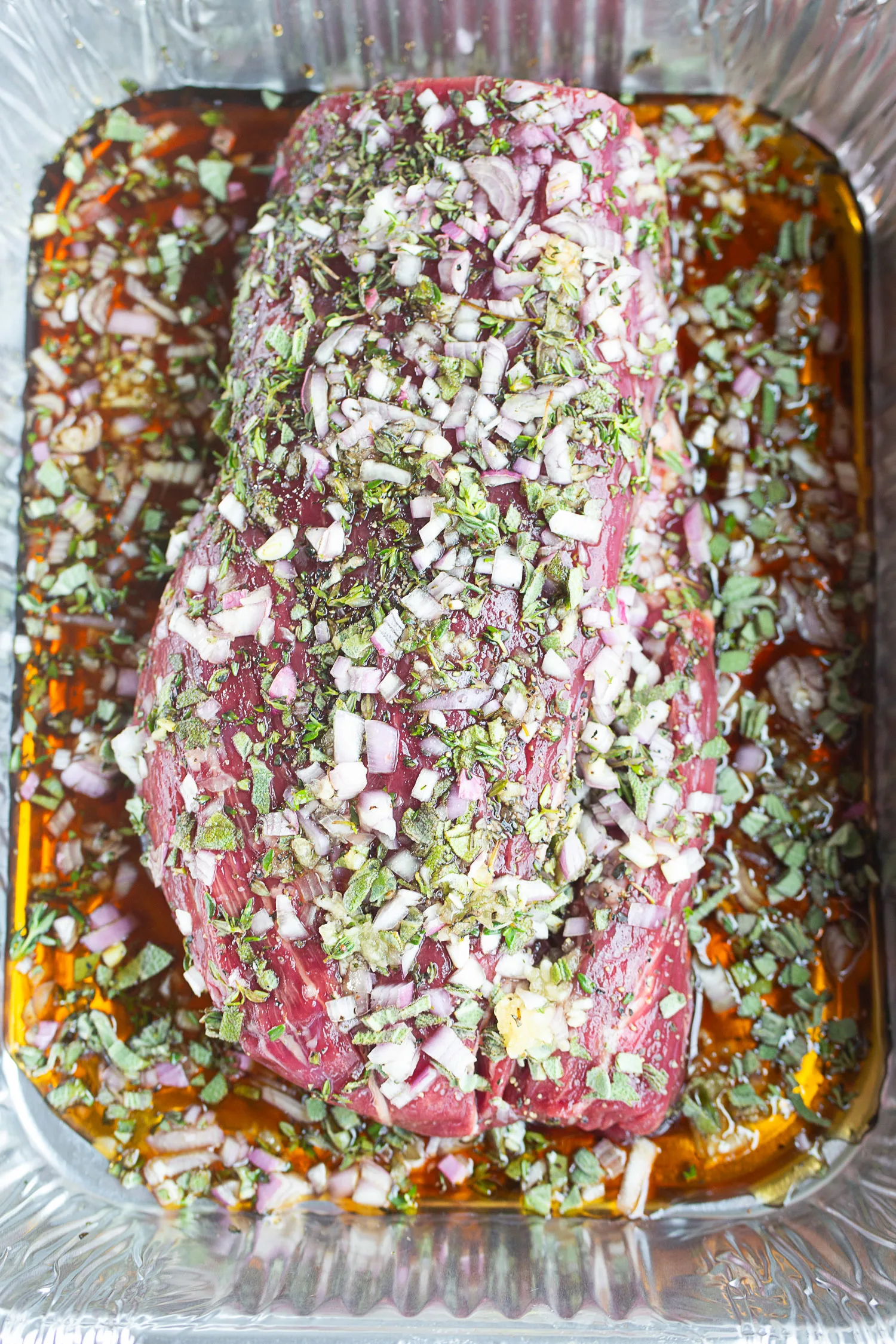
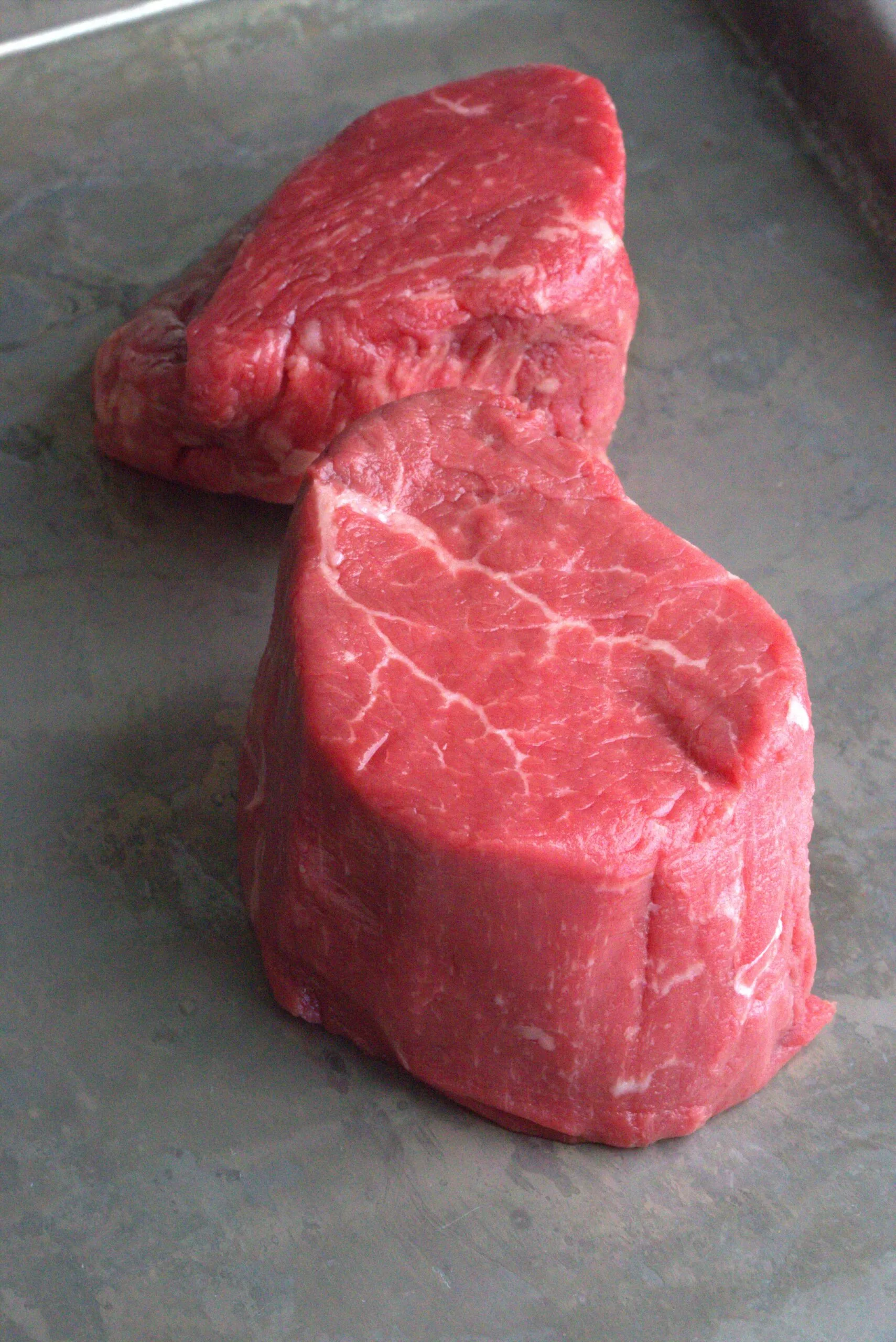
Filet Mignon and beef tenderloin are two of the most frequently confused meats. Tenderloin and Filet Mignon are sometimes misidentified as the same cut since they both originate in the same part of the animal and share comparable qualities (such as tenderness and leanness). Both are great options for a delicious steak dinner and can be prepared in many different ways, from grilling… to pan searing… to sous-vide and reverse searing.
Is Filet Mignon the same thing as Tenderloin? Are they just the same thing with different names? What about a tenderloin’s quality? Is it as good as Filet Mignon?
To put it briefly, yes and no. A true Filet Mignon is a part of the tenderloin, but the entire beef tenderloin cannot simply be cut into filets and labeled Filet Mignon. (Though, this happens more than you would think.)
The main difference is that the long muscle of the whole filet can be portioned into coin-sized steaks that people call Filet Mignon, but true Filet Mignon is really just a small portion of that whole piece of meat.
What Is Beef Tenderloin?
Before we go into the distinctions between Tenderloin and Filet Mignon, it’s necessary to have a foundational understanding of beef. The first cuts made into beef cattle in the butchering process are called the primal cuts, while the second cuts are subprimal.
Subprimal cuts include the steaks, roasts, and stew meat that we get from the butcher. Chuck, Loin, and Round are examples of primal cuts because they are taken from more substantial parts of the animal.
The Tenderloin is from the loin and sirloin cuts of meat located in the rear of the animal. The beef tenderloin is a versatile cut that can be roasted, made into the gourmet dish Beef Wellington, or thinly sliced from the smaller end of the tenderloin into “Filet Mignon” for individual servings. It has a lower fat content than other famous steak cuts like ribeyes and the muscle fibers are short creating a tender texture that can be cut with a fork. A whole beef tenderloin is ideal for large gatherings and special events since it can be easily cut into multiple nicely sized, juicy steaks.
Some people may confuse Tenderloin and Filet Mignon because both are found in the Tenderloin. The soft and flavorful Filet Mignon comes from the very tip of the Tenderloin, which is part of the loin region. Because it comes from such a lean cut of the animal, you can expect a delicate steak with little marbling and connective tissue. Because of these characteristics, Filet Mignon has become one of the most expensive types of beef and hailed as the king of steaks.
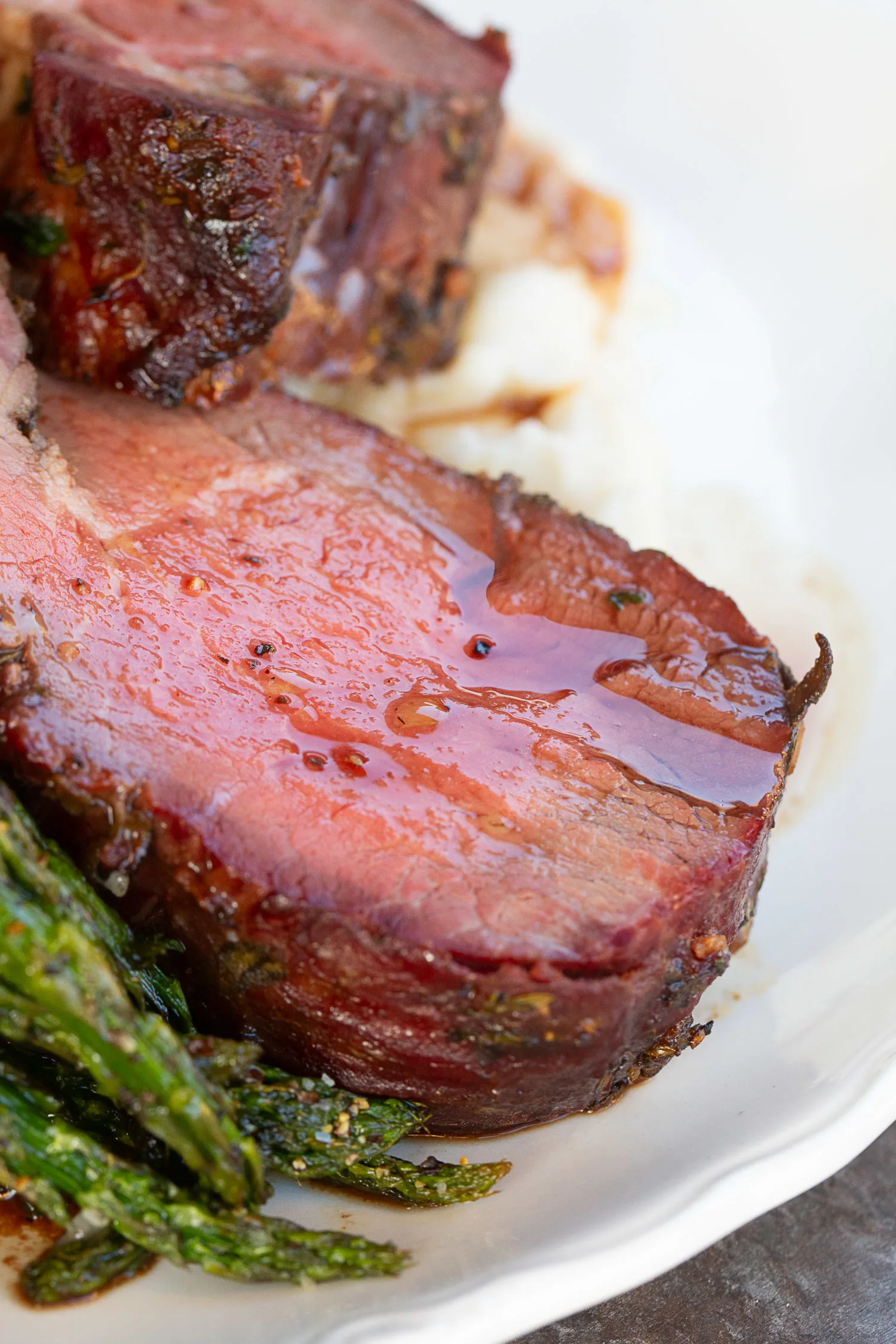
Our Favorite Tenderloin and Filet Mignon Recipes on Urban Cowgirl
Why is Tenderloin called Filet Mignon?
Now that we know what sets Tenderloin apart from Filet Mignon, we can define our terms. The term “Filet Mignon” literally translates to “small cut,” as the steak is often only one to two and a half inches in thickness. This beef cut is distinguished by little fat, a mild flavor, and is the most tender cut of beef on the animal. This is why many people consider Filet Mignon a special occasion dish, best served with fancy accompaniments.
You may hear people refer to Filet Mignon by a variety of other names, including “Tenderloin filet,” “beef tenderloin steak,” “tournedos (Tenderloin tips),” or just “filet.”
Are Tenderloin and Filet Mignon the same thing?
Have you ever heard someone say, “All squares are rectangles, but rectangles aren’t square”? This is kind of what’s happening here.
The short answer is that Filet Mignon is part of the Tenderloin, but not all Tenderloin is Filet Mignon.
The filet mignon is technically the tip of the tenderloin, though many people just call any good steak cut from the whole tenderloin a “filet”. Even high-end restaurants have been known to portion out steaks from a whole beef tenderloin and call them “filet mignon” but that is a misnomer.
According to butchers and culinary school textbooks, the filet mignon is just a small part of the tenderloin with a high price tag.
Why Is Beef Tenderloin More Expensive Than Filet Mignon?
The tenderloin, from which Filet Mignon steaks are carved, is widely considered the most tender part of the animal, which makes it one of the most expensive cuts of beef. Since only roughly 500 grams of Filet Mignon is found in the average animal, its price per unit of weight can be considerably higher than that of tenderloin.
Though it’s a pricey cut of beef, Filet Mignon has a texture that steak experts rave about. Its buttery texture and elegant beefy flavor make it a favorite of chefs and meat eaters alike.
Filet Mignon is typically cut from the beef tenderloin. However, Filet Mignon is more expensive per pound than beef tenderloin since it is cut from a larger cut of meat. As such, it is one of the most expensive cuts of meat available in the world of steaks. But it doesn’t mean you should consider steaks from the whole tenderloin a bargain. This delicious cut can set you back around $30 per pound, but its beefy flavor and incredibly fine texture make it well worth the investment, according to many fans.
You can save money on beef tenderloin by asking the butcher for one that hasn’t been trimmed. You’ll need to perform some prep work (removing the fat and slicing the meat), but you can save roughly $5 per pound if you do it yourself.
What To Cook With a Beef Tenderloin
While you can’t go wrong with a steak when dealing with tender meat from the tenderloin area, many well-known recipes feature this cut of meat. These include beef wellington, beef tartare, beef stroganoff, and many more. No matter the cooking method, your meal featuring beef tenderloin is sure to be mouth-watering. Let’s take a closer look at a few of these delicious dishes!
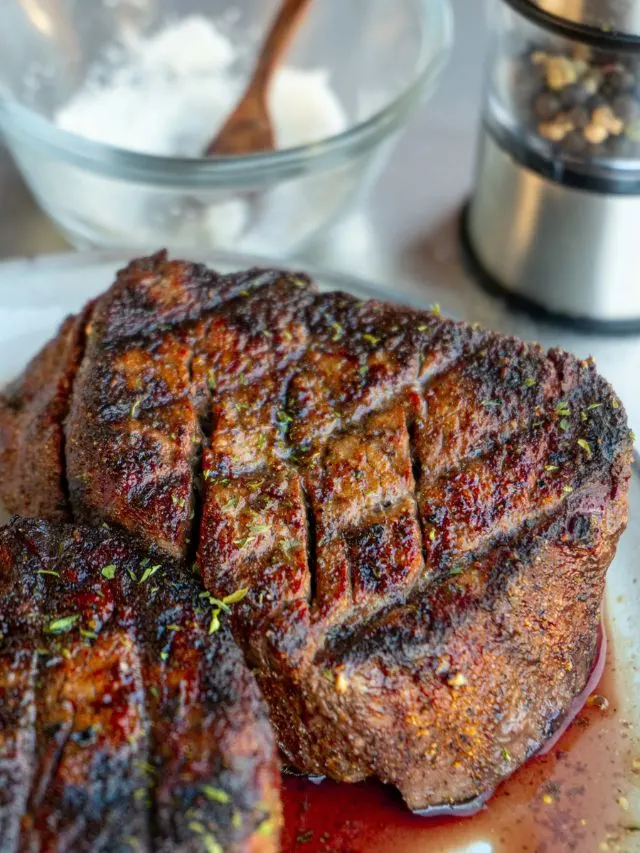
Grilled Filet Mignon
Check out my recipe for perfectly grilled filet mignon. I believe a charcoal grill is the better option for this tender cut of meat because it benefits from the charcoal flavor the cooking method will lend it. Be sure to note my recommendations for seasoning and dry brining your grilled filets for the best results!
Beef Wellington
This sumptuous meal has its origins in English cuisine. It features an entire tenderloin that is coated in mushroom duxelle, wrapped in prosciutto, and then wrapped in a delicate puff pastry, which is then cooked in the oven where the flavors meld together for a fancy dish that is often served at the holidays. The mushroom, ham, and puff pastry surround each of the Filet Mignon cuts. It’s essential to rub down the tenderloin with salt and sear it on high heat to provide some extra flavor from a nice brown sear.
Tenderloin Roast
Packaged whole beef tenderloins may be found in the meat section of most supermarkets. If you can’t find one at your local supermarket, just ask your butcher. Depending on factors such as size, quality, freshness, and where you buy it, the cost of a whole tenderloin can vary widely.
Between $10 and $30 per pound is the current rate for a whole, untrimmed tenderloin of USDA Choice Angus beef. Prices for organic, grass-fed, and Prime beef are higher. In the days following the holidays, beef tenderloin is frequently on sale.
For a main course, aim for one pound of beef tenderloin per person, while for a buffet, aim for slightly less. Although a pound may seem excessive for a single serving, the trimmed and roasted loin will be considerably smaller after shrinkage, and leftovers are preferable to being hungry.
Pro-tip: be sure to factor in extra time for letting the meat rest before it goes into the oven for the total cooking time. Letting the meat rest for at least 30 minutes prior to cooking will ensure even roasting.
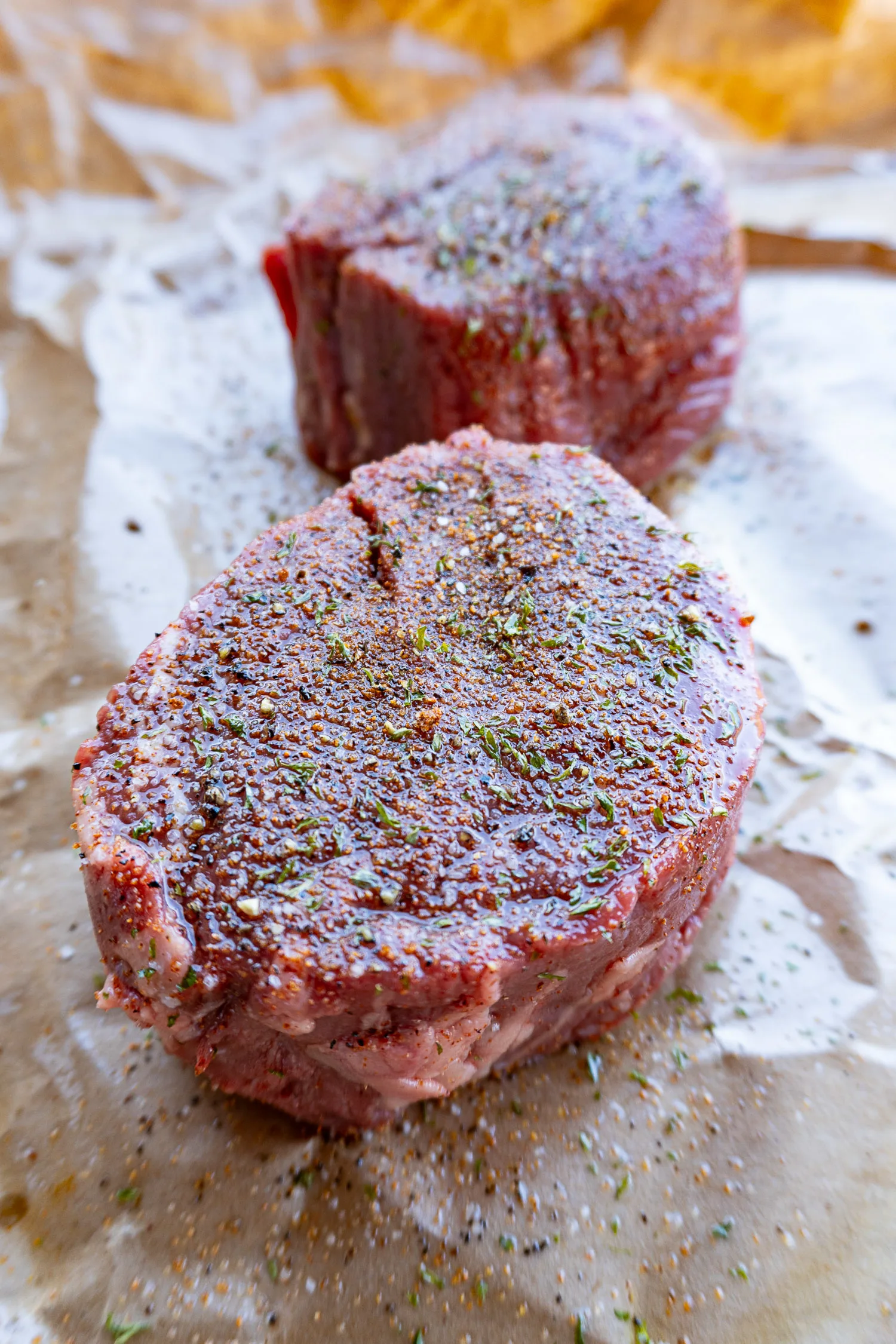
Smoked Beef Tenderloin
Even while filet mignon steaks are the most common way to enjoy this big, tender cut of beef, you can also purchase whole tenderloins as a special treat and smoke them over a marinade on your pellet grill or big green egg.
Here is my favorite recipe for Smoked Beef Tenderloin for the holidays.
There is no reason why you couldn’t smoke a beef tenderloin instead of the standard method of browning it in a skillet and then roasting it in the oven before slicing it into medallions.
Because it lacks the tough silver skin of connective tissue that is seen in more common smoked cuts of meat, beef tenderloin smokes fast, providing a whisper of smoke that lends a nice cozy flavor.
It’s a little log-shaped cut of beef from the loin region, and it’s incredibly tender and juicy. Because of this, we’ll only be smoking the meat for a short period of time to impart a great smoke flavor before reverse searing to a golden brown.
Beef Tartare
Feeling adventurous? Take a look at my article on beef tartare, a dish of chilled, chopped raw beef. Served on toasted baguette or gaufrettes (a crunchy, latticed potato chip), Beef Tartare is an elegant dish made with raw beef tenderloin that has been coarsely diced or finely minced and mixed with shallot, fresh herbs, dijon mustard, and other ingredients.

But isn’t raw beef dangerous to eat? When properly prepared with fresh, high-quality ingredients, beef tartare is safe for most adults to eat. But it’s essential to be careful and follow some measures to cut down on the risks of eating raw or undercooked meat.
Beef tartare’s safety is heavily dependent on the freshness of the meat and the cleanliness of the kitchen. It is essential to use fresh beef that is carefully handled and ideally organic or grass-fed. These measures lessen the potential for harmful bacteria like E. coli or salmonella to grow in rare steak.
Professional and amateur cooks alike adhere to stringent guidelines for preparing beef tartare. Whole cuts of beef are often chosen for this purpose and then checked closely to guarantee that only the freshest, bright red beef is used.
Are Porterhouse Steaks & Tenderloin Steaks the Same Thing?
The massive Porterhouse steak cut, which comes from the short loin section of the beef, could be confused for being similar to tenderloin. In fact, the tenderloin cut of meat protrudes into the short loin. The tenderloin cut comes from the psoas major muscle, which connects to the pelvis and leg bones, while the short loin comes from the longissimus dorsi. This cut of the beef is where T-bone steaks and ribeye steaks come from.
The steer’s longissimus dorsi muscles, located outside the ribs and extending from the neck to the hips, are a pair of thin, delicate strands of muscle. A steak’s tenderness declines as its corresponding muscle works harder for the steer over its lifetime. The longissimus dorsi (also known as the loin or backstrap) is a muscle that is rarely utilized and, therefore, very soft, making it an excellent choice for steak (but also very pricey).
Starting around two-thirds of the way down the steer’s spine, the psoas major runs down the inside of the rib cage, opposite the longissimus. The filet mignon and tenderloin are the two most tender cuts of beef from the whole animal. Because of this and their diminutive stature, they command the highest price per pound of meat.

Tenderloin Vs. Filet Mignon FAQ
How Many Filet Mignons are in a Tenderloin?
Technically only one! But through the more common definition meaning “thick steaks cut from the whole beef tenderloin” you can get about ten steaks depending on how thick you cut them. 1-inch steaks give me about 10 portions, 2-inch steaks give me about 8 portions.
What sets beef tenderloin apart from filet mignon?
The question “Is beef tenderloin the same as filet mignon?” arises frequently. The correct response is “no;” these are two distinct types of beef. Filet mignon, on the other hand, is cut from the beef tenderloin that is taken from its most soft and well-marbled end.
Is filet mignon more tender than tenderloin?
Filet mignon is often the more tender steak cut when compared to tenderloin. However, the tenderness of both cuts is remarkable. If cooked at low heat to medium rare, beef tenderloin can be almost as soft as filet mignon.
What is a different name for filet mignon?
The terms filet mignon and beef tenderloin are sometimes used interchangeably. Beef tenderloin, on the other hand, is not the same thing as filet mignon. It’s the larger untrimmed version that filet mignon is extracted from.
Filet, beef filet, and tenderloin filet are all acceptable alternatives to “filet mignon.”
What are some other names for beef tenderloin?
Fillet, whole tenderloin, and tenderloin steak are all alternative names for beef tenderloin. Beef tenderloin is also known as primal steak or loin steak due to its origins as a cut from the animal’s loin.
